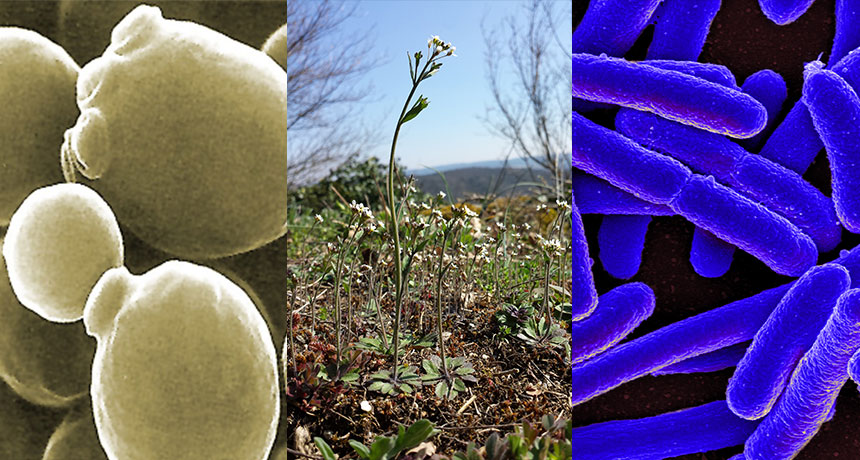Swapping analogous genes no problem among species
Yeast survives with bacteria, plant, human versions of shared genetic material

COMMON GROUND Yeast, bacteria and plants are very different organisms, but have many genes that look alike. New research shows about half of those analogous genes can substitute for each other.
Left to right: AJC1/Flickr (CC BY-NC-SA 2.0); Stefan.lefnaer/Wikimedia Commons (CC BY-SA 4.0); NIAID/Flickr (CC BY 2.0)






